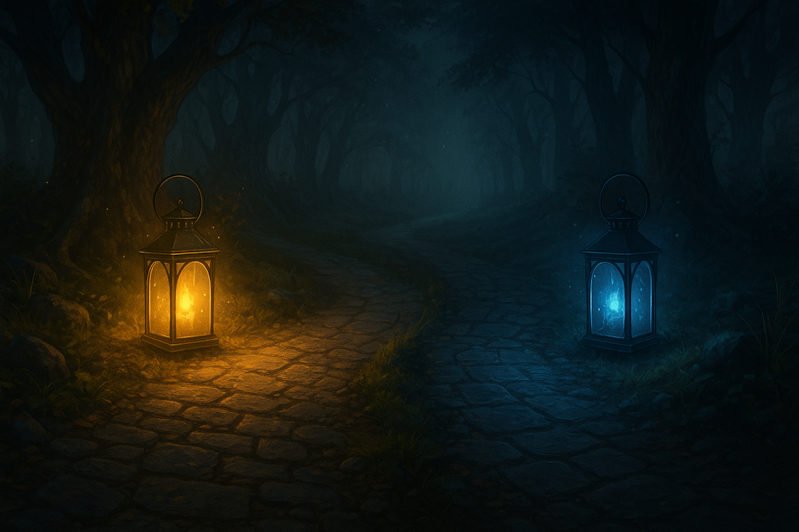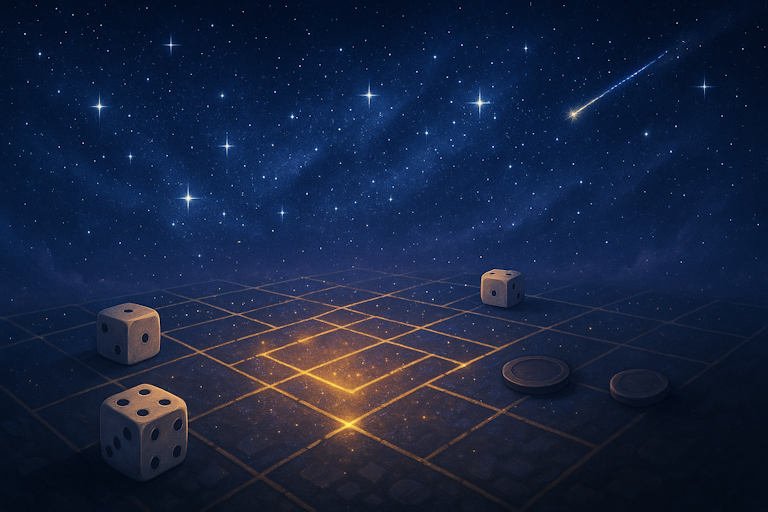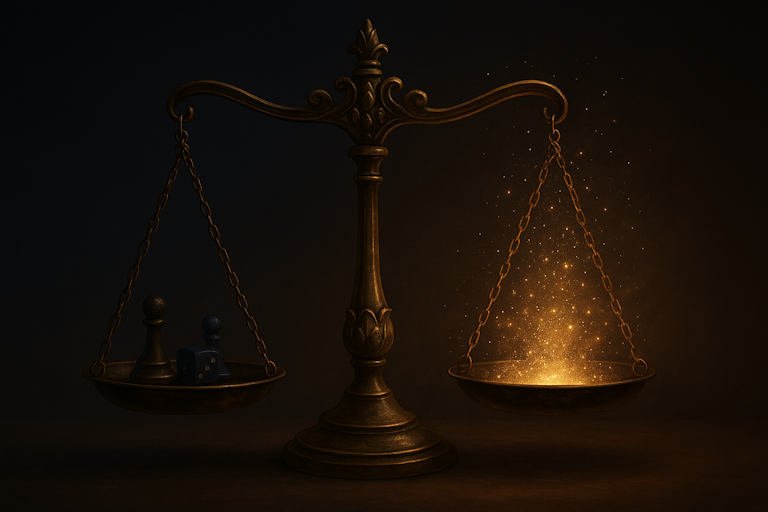
7 Fascinating Group Dynamics in Games That Always
Appear During a Game Night (2025)
Group dynamics in games are impossible to ignore. The moment friends gather around a table for a game night, invisible forces begin to shape the experience. Someone takes the lead, another cracks a joke, one player keeps the rules close, while someone else silently waits for the perfect strike. These dynamics don’t just influence who wins or loses—they decide whether the evening becomes playful, tense, or unforgettable.
Psychologists describe group dynamics as the patterns of behavior that emerge whenever people interact. In games, these patterns become magnified. The rules of the game provide a safe container, but the way players react to competition, cooperation, and betrayal turns the night into a stage for human behavior.
In this article, we’ll explore 7 fascinating group dynamics in games that always appear during a game night. From the natural leader to the quiet observer, from the relentless competitor to the unpredictable rebel—each role adds its own flavor. Understanding these dynamics not only explains why some moments make us laugh and others spark frustration, but also reveals why game nights stay in our memories long after the pieces are packed away.
What are group dynamics in games?
Game nights are rarely just about rules and pieces. The real excitement comes from the people around the table, and that is why group dynamics in games matter so much. They shape not only the outcome of the game but also the atmosphere of the evening itself.
Group dynamics in games are the invisible patterns that shape how players interact with one another. They emerge the moment people sit down to play: alliances form, leaders step forward, rules are debated, and someone inevitably takes on the role of trickster. These dynamics are not written into the rulebook; they arise from human behavior itself.
At the most basic level, group dynamics describe how individuals influence the group, and how the group influences individuals in return. In a game setting, this interplay becomes amplified. The structure of the rules creates a shared frame, but within that frame players bring their own personalities, moods, and strategies. The result is a living system—unpredictable, emotional, and endlessly fascinating.
Psychologists often highlight three forces at work: cooperation, competition, and conflict. In games, these forces play out in exaggerated form. Cooperation might show up as alliances or shared jokes, competition fuels the drive to win, and conflict can appear in rule disputes or sudden betrayals. Each element adds tension and energy, making the experience more than just following instructions on a box.
Importantly, group dynamics in games are what make game nights memorable. A set of rules can be replicated exactly, but the way people behave never repeats. One evening might be dominated by a strong leader, while the next is shaped by laughter and chaos from a joker in the group. This uniqueness explains why people return to the table again and again—not just for the game itself, but for the social drama that unfolds around it.
Discover
the Firefly Inn
Behind its lantern light, mysteries unfold.
Step inside and choose your path

Why group dynamics matter during a game night
One reason they matter is engagement. A rulebook can explain how to move tokens or score points, but it cannot create laughter, tension, or suspense. Group dynamics fill that gap. When a leader pushes the pace, or when a joker interrupts with humor, players feel more invested. The energy of the group often determines whether the game is experienced as thrilling or dull.
Another reason is memory-making. People rarely remember the technical details of a game, but they do remember how they felt. They recall the night a silent observer suddenly won with an unexpected move, or the argument that broke out when two players clashed over the rules. These moments become stories, retold long after the dice are packed away.
Group dynamics also teach us about ourselves. In the safety of play, people experiment with roles: some take charge, others resist, some cooperate, while others disrupt. These choices mirror real-life behavior in teams, families, or workplaces, but without the heavy consequences. That is why game nights are more than entertainment—they are small laboratories of human psychology.
Finally, group dynamics matter because they explain why the same game feels different every time. Even if the rules never change, the mix of personalities guarantees variety. No two nights are alike because no two groups are alike. This unpredictability is what keeps people coming back: not just to win, but to experience once more the social spark that games inevitably ignite.
7 Fascinating Group Dynamics in Games That Always Appear
When people gather for a game night, certain roles almost always appear around the table. They shape the flow of play, the mood in the room, and even the stories that get retold afterwards. Here are seven of the most common group dynamics you’re likely to encounter.
- The Leader: Every group has someone who naturally takes charge. The Leader explains rules, suggests strategies, and often sets the pace of play. While this can help the group stay organized, it can also create friction if others feel overshadowed. The presence of a Leader shows how authority quickly forms, even in playful settings.
- The Joker: Humor is the Joker’s tool. This player disrupts tension with jokes, silly moves, or playful chaos. Sometimes the Joker lightens the mood; other times they frustrate those who take the game seriously. Their role reminds us that laughter is often as central to game nights as winning.
- The Silent Observer: Quiet, watchful, and often underestimated, the Silent Observer plays with patience. They rarely dominate conversation but strike at just the right time. Their presence highlights how silence can be powerful—observation becomes a strategy in itself.
- The Rule Keeper: This dynamic revolves around order and fairness. The Rule Keeper insists on correct interpretation and ensures that no one bends the rules. While their precision can prevent chaos, it can also spark debate when others prefer a more flexible style.
- The Rebel: The Rebel thrives on breaking patterns. They might sabotage, ignore strategies, or deliberately bend social expectations. Though disruptive, Rebels add unpredictability and keep the group from becoming too rigid. Their presence reflects our human urge to test boundaries.
- The Alliance Builder: Negotiation is at the core of this role. The Alliance Builder forms pacts, seeks allies, and builds temporary trust. Their success depends on persuasion, but alliances often crumble in dramatic fashion—turning cooperation into betrayal.
- The Competitor: For this player, everything centers on winning. They count points, optimize moves, and sometimes clash with the Joker or Rebel. While their intensity can raise the stakes, it can also make victories more meaningful for the whole group. The Competitor embodies our instinct for achievement.
Together, these dynamics show that games are never just about rules or pieces. Each role adds its own spark, turning a simple evening into a mix of competition, laughter, tension, and surprise. The real magic of game nights lies in this blend—where human behavior becomes as important as the game itself.

Discover
the Firefly Inn
Behind its lantern light, mysteries unfold.
Step inside and choose your path

How group dynamics influence player behavior
The presence of group dynamics in games does more than shape the flow of play—it influences how people act, react, and even remember the evening. Players often find themselves adopting roles they might not notice in daily life, and these roles can unlock unexpected sides of personality.
When a Leader takes control, others may follow more passively, accepting guidance even if they would normally resist authority. A Joker can shift the group’s mood with humor, but can also encourage others to let go of seriousness and join in the playfulness. The Silent Observer often provokes curiosity—others may underestimate them, which only makes their eventual move more powerful.
Dynamics also affect emotional tone. A Rule Keeper keeps the game structured, but may spark tension when challenged by a Rebel who wants to bend expectations. An Alliance Builder can turn a simple contest into a negotiation, inviting trust but also setting the stage for betrayal. And a Competitor can raise the stakes so high that everyone feels the rush of victory—or the sting of defeat—more intensely.
These interactions remind us that games are more than neutral systems. They act like mirrors, reflecting the personalities and choices of those who play. Group dynamics influence not only strategies but also emotions: frustration, laughter, pride, or surprise. In this way, game nights become a small but vivid stage for human behavior, where every move reveals something about how people connect with one another.
Conclusion: group dynamics in games as mirrors of human behavior
At first glance, games may look like simple systems of rules, dice, or cards. But the real drama begins when people sit down together. Group dynamics in games reveal how laughter, rivalry, cooperation, and conflict all emerge naturally, shaping the flow of every game night.
These dynamics matter because they show us more than who wins or loses. They highlight how personalities interact, how roles shift, and how even a casual evening can turn into a stage for strategy, tension, or comedy. Each role—Leader, Joker, Silent Observer, Rule Keeper, Rebel, Alliance Builder, Competitor—adds its own spark to the experience.
In the end, group dynamics remind us that the value of games is not only in the outcome, but in the stories that remain afterward. They explain why the same game feels new every time, why betrayals sting yet get retold with laughter, and why players return to the table again and again.
Game nights endure because they are more than play: they are living snapshots of human behavior, illuminated by lantern light and kept alive in memory long after the pieces are packed away.
Discover
the Firefly Inn
Behind its lantern light, mysteries unfold.
Step inside and choose your path





